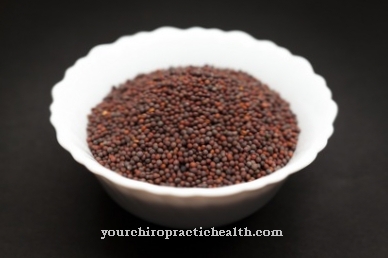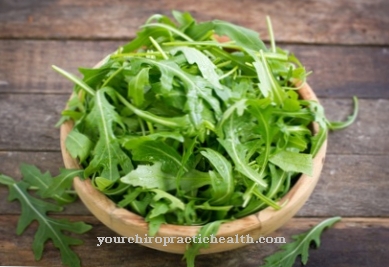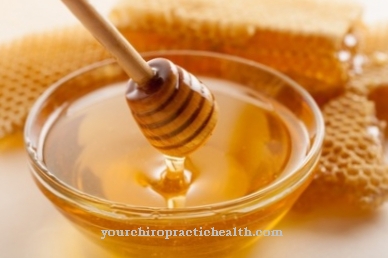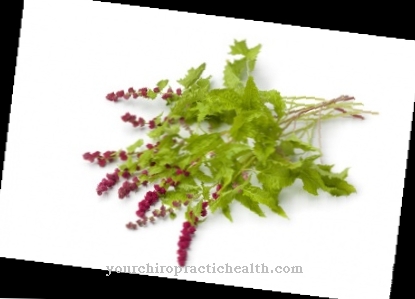In folk medicine the goat milk said to have great healing effects. It was already touted by Paracelsus as a particularly beneficial food and its healing effects were also known in ancient times.
Hippocrates recommended them to promote concentration, strengthen nerves and the body's own immune system. Paracelsus used them against lung diseases and better blood circulation in the skin. Goat's milk has been known as a special elixir of life since ancient times.
What you should know about goat milk

The first milk used for human consumption is probably goat milk.
The season for the high-quality and very digestible food begins in Europe and other countries with the seasons in spring, as the biologically arranged winter break for the mother goats is observed. Until the lambs are born, the pregnant animals are not milked. Even when the lambs are born and the mother animals give milk again, it is initially available exclusively to the lambs. After the biological winter break, the manufacturers can then start processing the goat's milk for the various products again in spring.
The taste of goat's milk is quite different from that of cow's milk - how it tastes exactly is what matters. For some, the taste may not be intense enough, while others refuse to take a test sip just at the smell. The fact is that it has a sweet, aromatic, but somewhat stern taste, which is given by a high content of caproic and caprylic acid. These are formed when fatty acids are released, which result from fat splitting.
Female goats don't have an intense smell anyway, that's just the strong goat stench in the rutting season, which can be carried over to everything. If the goats have plenty of fresh air and are milked cleanly and quickly, their milk has an aromatic, nutty taste. Goat's milk is available worldwide because the animals are very frugal and find a "Gräselein" to pluck everywhere. For centuries, this milk has served as a valuable food in particularly poor and dry areas.
Worldwide, their production is around 3.5% of cow's milk production. Dairy goats produce around 15.2 million tons of milk worldwide every year. India is the top producer with 4 million tons, followed by Bangladesh with 2 million tons of milk, followed by Sudan with 1.5 million tons, then Spain and France with 0.6 million tons each, followed by Greece 0.5 million tons of goat milk.
Goat's milk has a particularly long and strong tradition in the European countries of Spain, Portugal, France, Italy and Greece. In Germany, Switzerland and Austria, the keeping of goats and the processing and utilization of their milk has become increasingly important since the 1980s and 1990s.
On average, a goat produces around 600 liters a year, but there are also goats with a milk yield of 900-1200 liters a year. Many shows are still milked manually, but if the herd is very large, milking machines are also used here today. The origin of the goat's milk in the shops is usually the immediate vicinity. Short transport routes are important for fresh milk.
Importance to health
Goat's milk has a very good nutritional value. Their high content of polyunsaturated fatty acids has a very positive effect on increased cholesterol levels. Since most goats are grazing animals, they eat a lot of fresh grass with which they absorb a lot of linoleic acid.
Your milk then has antioxidant effects, can prevent arteriosclerosis, normalizes disturbed sugar metabolism. The valuable substances orotic acid, CLA and Q10 offer the body valuable protection. Cell growth is promoted by orotic acid, damaged nerve cells can regenerate, liver cells can be recreated and damaged ones repaired. With asthmatics the airways are relieved and protected and with neurodermatitis it provides relief. Other contents alleviate stomach and intestinal disorders.
Who hasn't heard that Cleopatra bathed in goat milk to keep her skin beautiful? Today it is known that the ingredients in goat's milk correspond to the protective acid mantle of human skin; it promotes blood circulation and moisturizes it.
Ingredients & nutritional values
Goat milk has high levels of minerals, vitamins and trace elements.
In terms of its structure and structure, it is very similar to breast milk, which is why it is often used as a substitute for baby and baby animal food. Zinc, copper, phosphorus, potassium, calcium, sodium and magnesium show their valuable contents. The healthy liquid is also equipped with vitamins D, C, B2, B1, E and A. The high content of vitamin D is particularly important for the preparation of baby food.
Goat milk is easier to digest than cow milk because its fatty acid composition is different. Goat milk is characterized by more medium-chain fatty acids and fewer long-chain fatty acids than cow's milk and its fat globules are considerably smaller, which makes them easier and faster to digest because the digestive enzymes are broken down better and more easily. Problems such as flatulence or diarrhea occur very rarely when consuming goat milk.
Intolerances & allergies
Goat milk is particularly recommended for people who suffer from allergies or fructose or histamine intolerance; it is usually tolerated without problems.
Goat milk can also be a way out for people who suffer from lactose intolerance, because the lactose in goat milk has a different composition than lactose in cow's milk and is usually well tolerated. And even those who suffer from a whey protein allergy have the alternative to goat milk, as a whey protein allergy is specific to cow's milk.
Shopping & kitchen tips
If goat's milk is homogenized and then heated to an ultra-high temperature, it can be kept for weeks at room temperature, but it does not affect the quality of the milk.
The goat's milk is best stored in a dry state for the longest, up to 12 months. These are mostly natural qualities with all the good nutrients that are retained through gentle spray drying.
Due to its ingredients, goat milk has a limited shelf life when fresh. Correct storage is therefore all the more important so that the quality is maintained and can be used to the maximum. Goat milk is sensitive to light and heat and should be put in the refrigerator as quickly as possible after shopping. It can remain there for up to a week, well closed. Once opened, enjoyment is guaranteed for up to 2 days.
Preparation tips
The many different goat cheese delicacies have become an integral part of gourmet restaurants in Europe alone. Cheesemakers and celebrity chefs always come up with new creations and thus offer their customers and guests delightful taste experiences again and again.
In Norway, “Ekte Geitost”, real goat cheese, is almost a national dish. It got a very special brown color through the caramelization of the milk sugar and also has a sweet, caramel-like taste. Goat milk products and goat milk are widely available in the Middle East. The yoghurt-like laban made from goat's milk, which is often used in lamb dishes and served with appetizer platters, is very popular and well-known.
But there are also many recipes in this country, because the slightly bitter note of goat's milk harmonises perfectly with sweet or salty. Whether a cream cheese dip or a goat's milk mousse with walnut brittle and honey is up to the individual taste.
























.jpg)



